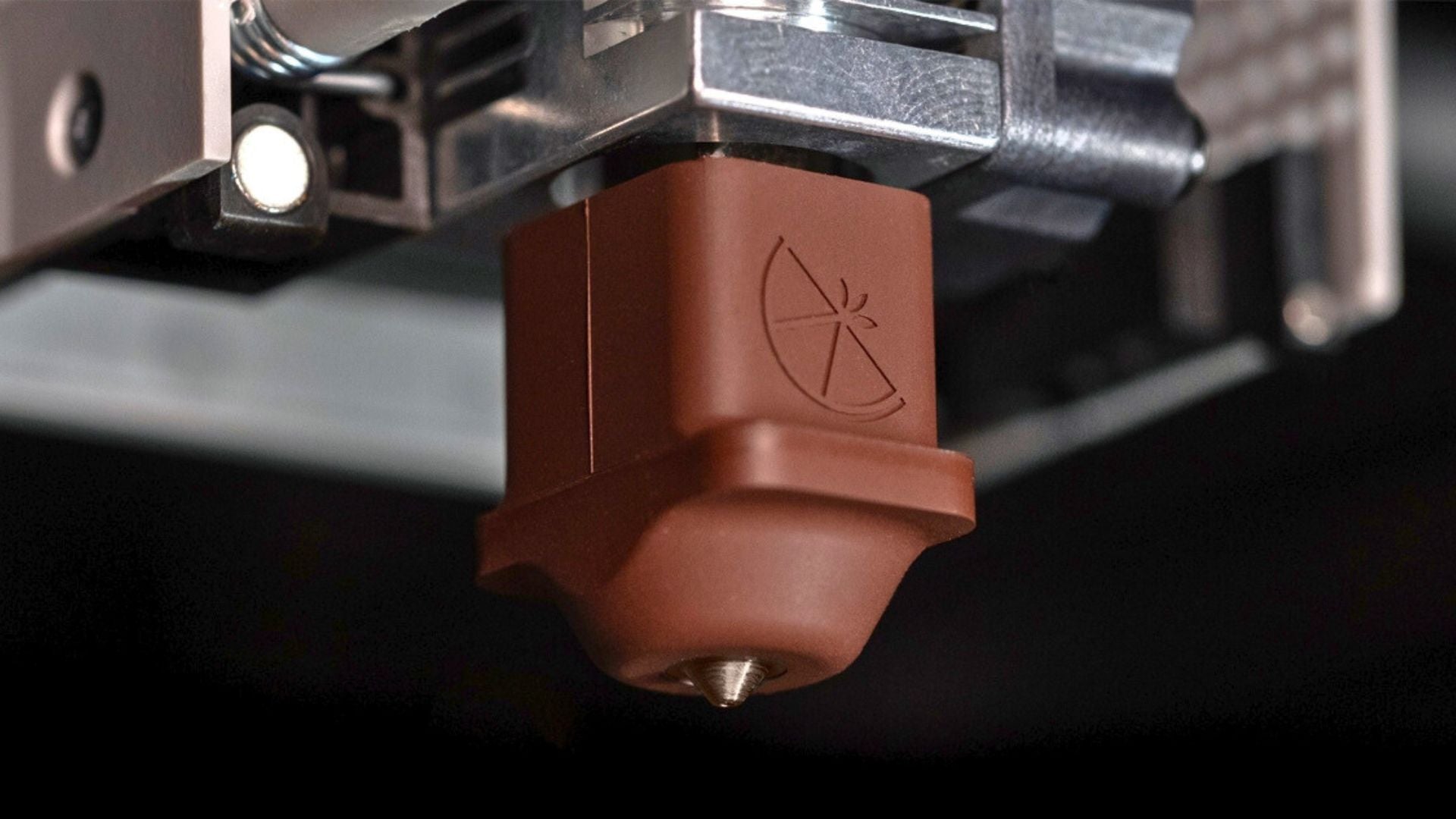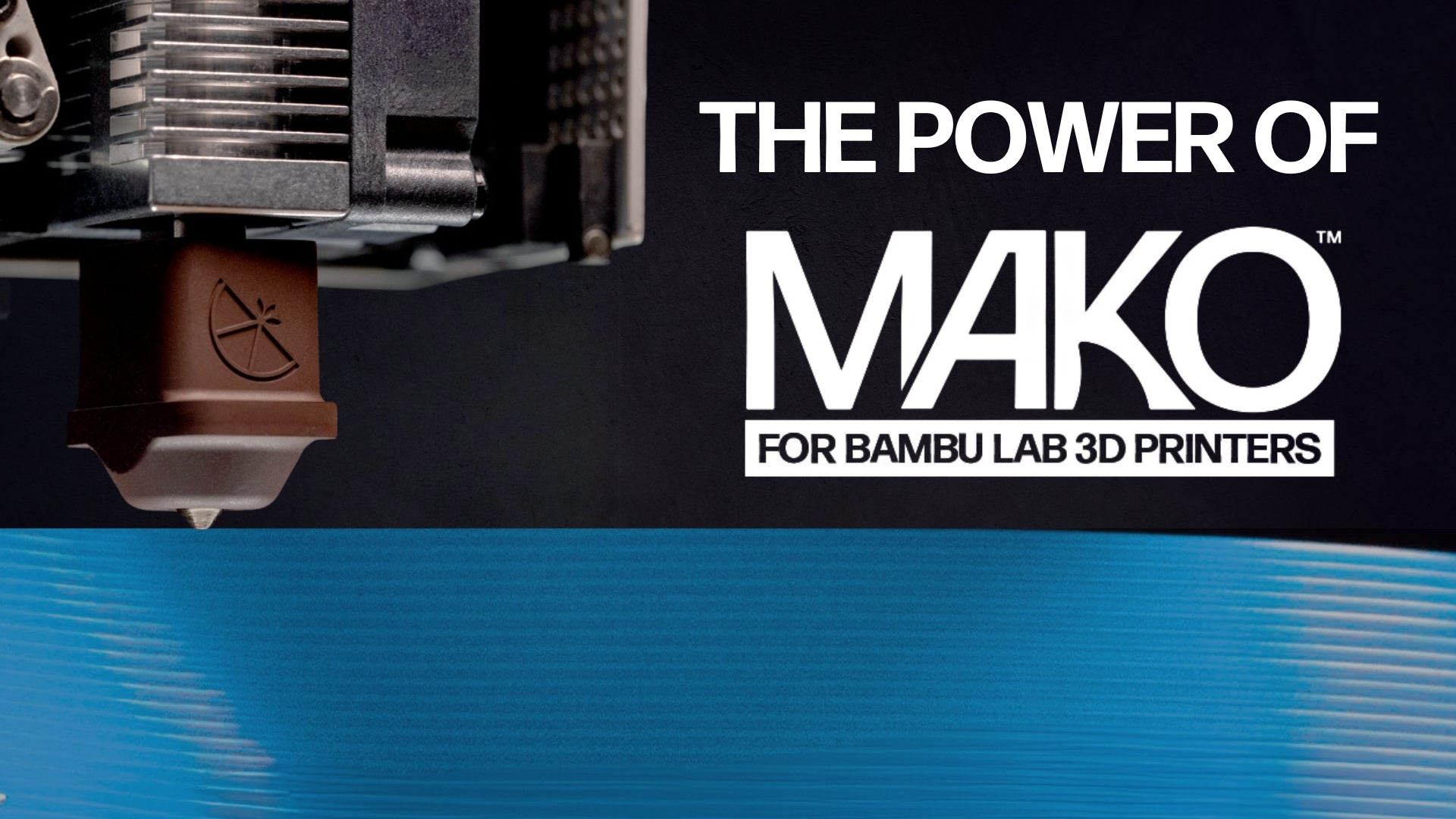
FIN: The Complete Guide
We have received a lot of questions about the new FIN standard we debuted with the launch of our latest Mako™ hotend for Bambu Lab machines. We’ll try to answer all the questions below, but the core of the matter is that the additive manufacturing industry is sorely lacking in universal standards that empower users to work across platforms. We believe that is necessary for the industry to mature and thrive.

Q: What is it?
A: FIN is a new published standard that describes a particular geometry and feature set for 3D printer nozzles.
Q: What does it stand for?
A: FIN stands for Free and open-source Insulated Nozzle standard.
Q: Why are you making a new standard?
A: Historically, every manufacturer has had their own nozzle geometries and compatibility was the least of their concerns. This isn’t good for the user experience, nor is it good for aftermarket suppliers, or companies pushing the R&D envelope for nozzle technology.
Q: Isn’t this just another proprietary nozzle? Other companies have tried to deploy new nozzle geometries on their own and failed. Why would Slice do this?
A: Previous attempts to develop new nozzles have failed to gain traction for two reasons:
- Proprietary designs created in isolation limit collaborative opportunities.
- There has to be a real performance benefit to drive adoption.
We know we couldn’t do it alone, which is why we coordinated with three other nozzle manufacturers - Bondtech, Diamondback, and Micro Swiss - to develop and deploy this new standard. We have fully open-sourced the standard, including manufacturing drawings (see link to see the latest revision, or the sample drawing below), to encourage other companies to adopt it. FIN also has true performance benefits.
Q: What are the performance benefits of FIN?
A: Traditionally, nozzle geometries have been manufactured only with cost competitiveness in mind, without thought to thermodynamic optimization (we’ve done it too!). The FIN standard was designed with thermodynamics in mind from the start. This is achieved in a few ways:
- Thermal expansion - As temperatures rise, nozzles made to the FIN standard better maintain interference (seal pressure) between nozzles and hot blocks made of materials with different coefficients of thermal expansion by reducing the length of thread engagement compared to legacy nozzle geometries.
- Silicone boot interlock - FIN is designed to completely interlock with a silicone cover (boot or sock) such that the boot can locate on the nozzle instead of the hot block. This eliminates the issue of boots sagging off of the hot block and allows for a positive, palpable interlock so you can know that you know that you know that the boot is on.
- Insulation - the I in FIN stands for Insulated. The silicone boot completely envelopes the nozzle in such a way that cooling air is deflected from all but the very tip of the nozzle, keeping the nozzle closer to the intended printing temperature and improving mechanical properties of printed parts. As an added benefit it also significantly reduces the likelihood of plastic adhering to the nozzle and causing blobs or other failures in the print.

Q: What other companies make FIN standard nozzles now?
A: Currently, (as of this writing in mid-July 2024) Slice Engineering, Bondtech, Diamondback, and Micro-Swiss make FIN standard nozzles with various unique features based on each company’s own technology, but all sharing identical geometry. If you like the performance benefits of FIN standard nozzles, let your favorite 3D printer or nozzle manufacturer know that you want them and maybe we can all work together to drive some standardization!
Q: What hotends does FIN fit?
A: Currently, (as of this writing in mid-July 2024) FIN standard nozzles are only compatible with Slice Engineering’s Mako hotend for Bambu Lab machines. However, there are multiple other hotends in development, including a broader range of Mako hotends and the next generation of Mosquito hotends from Slice, that will utilize the FIN standard.
Recent Posts


 (Sample Drawing, see link
(Sample Drawing, see link 


